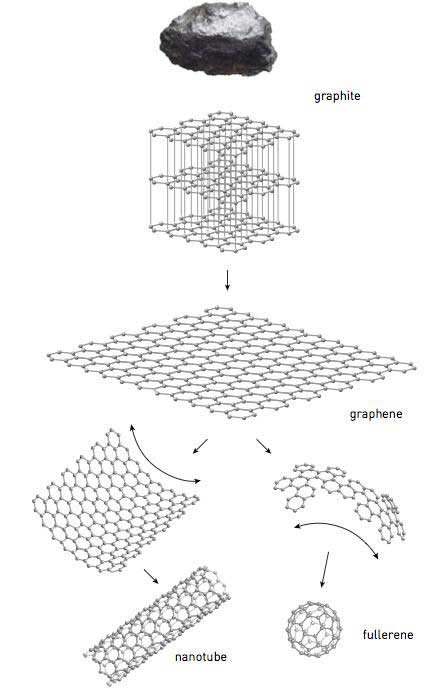
Some people meet, fall in love and get married right away. Others can spend hours in the sock aisle at the department store, weighing the pros and cons of buying a pair of wool argyles instead of cotton striped. (…)
People who often have conflicting feelings about situations—the shades-of-gray thinkers—have more of what psychologists call ambivalence, while those who tend toward unequivocal views have less ambivalence. (…)
For decades psychologists largely ignored ambivalence because they didn’t think it was meaningful. Now, they have been investigating how ambivalence, or lack of it, affects people’s lives, and how they might be able to make better decisions. Overall, thinking in shades of gray is a sign of maturity, enabling people to see the world as it really is. (…)
If there isn’t an easy answer, ambivalent people, more than black-and-white thinkers, are likely to procrastinate and avoid making a choice, for instance about whether to take a new job, says Dr. Harreveld. But if after careful consideration an individual still can’t decide, one’s gut reaction may be the way to go.
{ WSJ | Continue reading | Thanks Tim }
psychology |
October 5th, 2010

Mathematical proofs feel both beautiful and inevitable. Once you understand a proof of, say, the Pythagorean theorem, you can be sure this knowledge won’t be contradicted by any future discovery nor changed by any new insight. So you can use your knowledge to measure distances or map people’s Netflix tastes with utter confidence. Unsurprisingly, as I heard the cosmologist Mario Livio say recently, “most working mathematicians are Platonists”—convinced their proofs and concepts exist independently of the human race, eternally out there, waiting to be discovered.
Biology isn’t like this. Evolution is accepted as the fundamental theory of life because we see evidence of it all around us. Not because it has been irrefutably, mathematically proved.
Gregory Chaitin: “it is scandalous that we do not have a mathematical proof that evolution works.” Hence one of his ongoing intellectual quests, described engagingly in this talk: The development of “metabiology.” Metabiology is to be a model of life that will let researchers “represent mathematically the fundamental biological principles of evolution in such a manner that we can prove that evolution must take place.”
{ Big Think | Continue reading }
science, theory |
October 5th, 2010

{ The Royal Swedish Academy of Sciences has awarded the Nobel Prize in Physics for 2010 to Andre Geim and Konstantin Novoselov, both of the University of Manchester, “for groundbreaking experiments regarding the two-dimensional material graphene.” | ScienceDaily | full story }
science |
October 5th, 2010
visual design |
October 5th, 2010

Atkins-style low-carbohydrate diets help people lose weight, but people who simply replace the bread and pasta with calories from animal protein and animal fat may face an increased risk of early death from cancer and heart disease, a new study reports.
The study found that the death rate among people who adhered most closely to a low-carb regimen was 12 percent higher over about two decades than with those who consumed diets higher in carbohydrates.
But death rates varied, depending on the sources of protein and fat used to displace carbohydrates.
{ NY Times | Continue reading }
photo { Helmut Newton }
related { Every five years the federal government updates its dietary guidelines for Americans. This year, with most Americans overweight or obese and at risk of high blood pressure, policymakers are working to reinvent the familiar food pyramid and develop advice that is simple and blunt enough to help turn the tide. | Washington Post | Continue reading }
food, drinks, restaurants, health |
October 5th, 2010

Gilles Deleuze’s Difference and Repetition (1968) introduces the importance of a philosophy of difference. (…)
Repetition may be variable, and thus may include difference within itself. (…)
A simple repetition is a mechanical, stereotyped repetition of the same element, while a complex repetition is a repetition which has difference hidden within itself. (…)
1) that everyone already knows how “thought” is to be defined; 2) that common sense and good sense guarantee this knowledge and understanding; 3) that recognition of an object is determined by the sameness of the object; 4) that representation can appropriately subordinate the concept of difference to the Same and the Similar, the Analogous and the Opposed; 5) that any error which occurs in thinking is caused by external rather than internal mechanisms; 6) that the truth of a proposition is only determined by what is designated by the proposition; 7) that problems are only defined by their solutions; and 8) that learning is only a means of gaining knowledge. Deleuze explains that these eight postulates are significant obstacles to the understanding of difference and repetition.
{ Alex Scott | Continue reading | Quote: Nietzsche, The Gay Science, 304, 1882 }
deleuze, ideas, nietzsche |
October 3rd, 2010

{ Colonel Rosa Klebb, a high ranking member of the feared Russian counter-intelligence agency SMERSH, and main antagonist from the James Bond film and novel From Russia with Love | Wikipedia | more }
showbiz, weirdos |
October 3rd, 2010

Grunting During a Tennis Shot May Provide a Competitive Advantage
Some tennis fans and players feel that grunting during a tennis shot distracts the opponent, and therefore provides an unfair competitive advantage. Many professional tennis players grunt; one of them (Maria Sharapova) is reported to grunt at over 100 decibels. (…)
Grunting slowed down student response time by between 21 and 33 milliseconds, and the students made between 3% and 4% more predicted directional errors, whether the video clips ended at contact with the ball or 100 milliseconds afterwards. These differences in time and error were statistically significant.
{ NASW | Continue reading }
psychology, sport |
October 3rd, 2010

Laws banning texting or talking on a mobile phone while driving don’t reduce car accidents.
“In fact,” concludes the US Highway Loss Data Institute, “[texting] bans are associated with a slight increase in the frequency of insurance claims filed under collision coverage for damage to vehicles in crashes.”
This counter-intuitive revelation comes from a study by the HLDI, which compared insurance-claim data in states that enacted texting bans with the same data in states where no such laws exist. Data from after the bans took affect was also compared to stats before the bans took effect.
Texting bans did not reduce accident rates, and in some states the accident rates increased after the bans went into effect. “In California, Louisiana and Minnesota,” the HDLI reports, “the bans are associated with small but statistically significant increases in collision claims (7.6%, 6.7%, and 8.9%, respectively).”
{ The Register | Continue reading }
U.S., incidents, law, technology, transportation |
October 3rd, 2010

{ It might be a place that only a lichen or pond scum could love, but astronomers said Wednesday that they had found a very distant planet capable of harboring water on its surface, thus potentially making it a home for plant or animal life. Nobody from Earth will be visiting anytime soon: The planet, which goes by the bumpy name of Gliese 581g, is orbiting a star about 20 light-years away in the constellation Libra. | NY Times | full story }
mystery and paranormal, science, space |
October 3rd, 2010

{ Douglas Huebler, Duration piece #31, Boston, 1974 | On December 31st, 1973, Douglas Huebler photographed a woman, an eight of a second before midnight. The exposure time was one fourth of a second, so the woman had half of her body in 1973 and the other half in 1974. }
photogs, time |
October 2nd, 2010

Scientists found that humans exhibit two types of memory. They call one “verbatim trace,” in which events are recorded very precisely and factually. Children have more “verbatim trace,” but as they mature, they develop more and more of a second type of memory: “gist trace,” in which they recall the meaning of an event, its emotional flavor, but not precise facts. Gist trace is the most common cause of false memories, occurring most often in adults. Research shows that children are less likely to produce false memories, because gist trace develops slowly.
{ ScienceDaily | Continue reading }
Psychological scientists have discovered all sorts of ways that false memories get created, and now there’s another one for the list: watching someone else do an action can make you think you did it yourself. (…)
They found that people who had watched a video of someone else doing a simple action — shaking a bottle or shuffling a deck of cards, for example — often remembered doing the action themselves two weeks later.
{ ScienceDaily | Continue reading | Related: People can easily create false memories of their past and a new study shows that such memories can have long-term effects on our behavior. }
photo { František Drtikol }
brain, kids, psychology, science, time |
October 1st, 2010
imp, weirdos |
October 1st, 2010

Red is a color evoked by light consisting of the longest wavelengths of light discernible by the human eye.
Longer wavelengths than this are called infrared (below red), and cannot be seen by the naked human eye.
{ Wikipedia | Continue reading }
In Judo, for instance, fighters are allocated Blue or White prior to competition, and in Taekwon-Do, the colours are Red and Blue. Boxers often wear multi-coloured or patterned trunks, but the colour of the gloves is often different.
Hill and Barton (2005) demonstrated that in the 2004 Olympic Games Red competitors were significantly more successful than blue competitors in an even contest. Basically, Red doesn’t give you a +10 str, but it will a) tip the bias of the point recorders in your favour; b) increase one’s competitiveness; or c) scare you opponent just enough so that you have an advantage.
Their paper, published in Nature, does not speculate on the cause – a, b, and c are my own speculations. They also found that Red vs. non-red and non-blue also tipped the advantage to the red competitors. It kind of stands to reason – red is a scary colour, it’s a natural marker of many evolutionary elements, and it’s visually arresting , like black.
I thought maybe it has to do with dominance of colour – but Dijkstra and Preenen (2008) demonstrated that in Judo (where competition is between blue v white) there is no relative advantage to blue – which is arguable the more dominant colour.
{ Psycasm | Continue reading }
photo { Adam Amengual }
colors, fights, ideas, psychology |
October 1st, 2010

New study finds groups demonstrate distinctive ‘collective intelligence’ when facing difficult tasks. (…)
That collective intelligence, the researchers believe, stems from how well the group works together. For instance, groups whose members had higher levels of “social sensitivity” were more collectively intelligent. “Social sensitivity has to do with how well group members perceive each other’s emotions,” says Christopher Chabris. (…)
The average and maximum intelligence of individual group members did not significantly predict the performance of their groups overall. (…)
Only when analyzing the data did the co-authors suspect that the number of women in a group had significant predictive power. “We didn’t design this study to focus on the gender effect,” Malone says. “That was a surprise to us.” However, further analysis revealed that the effect seemed to be explained by the higher social sensitivity exhibited by females, on average.
{ EurekAlert | Continue reading }
photo { Helmut Newton }
ideas, psychology, relationships |
October 1st, 2010
























